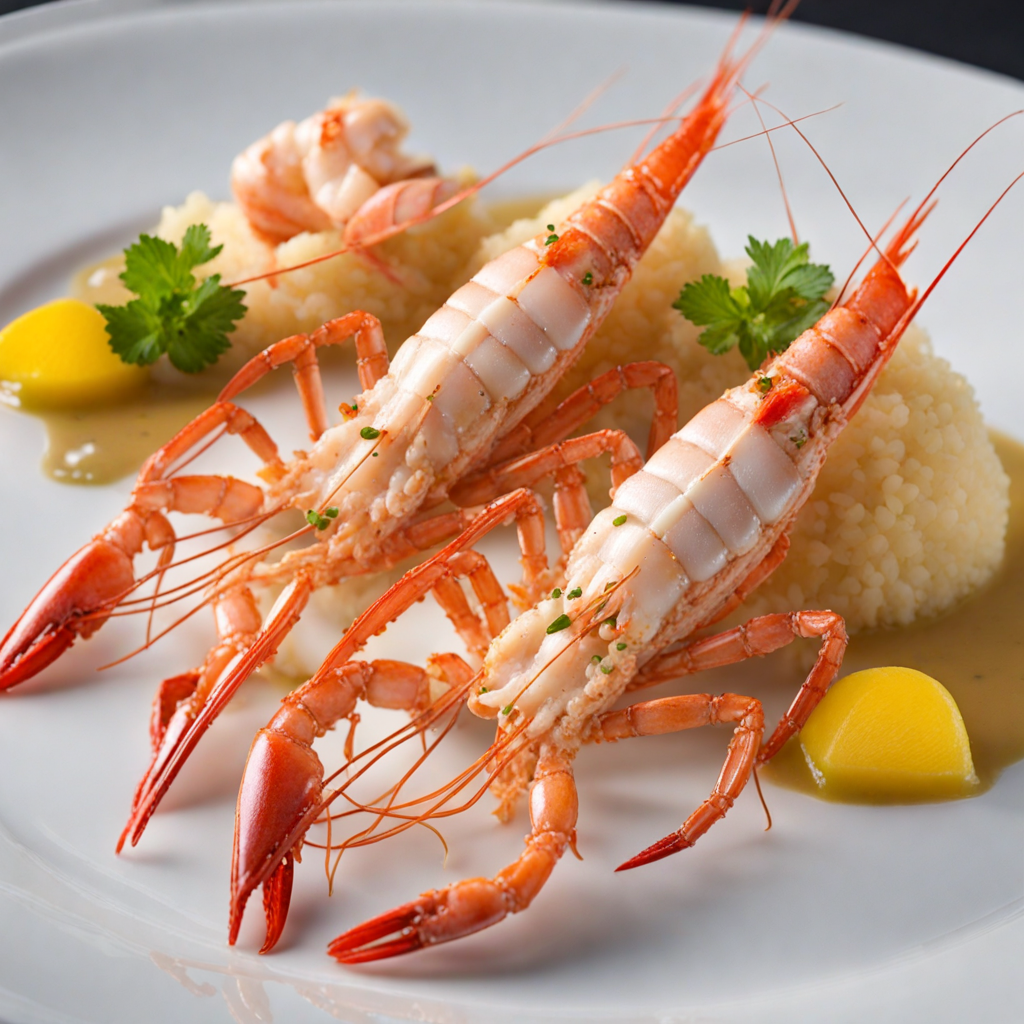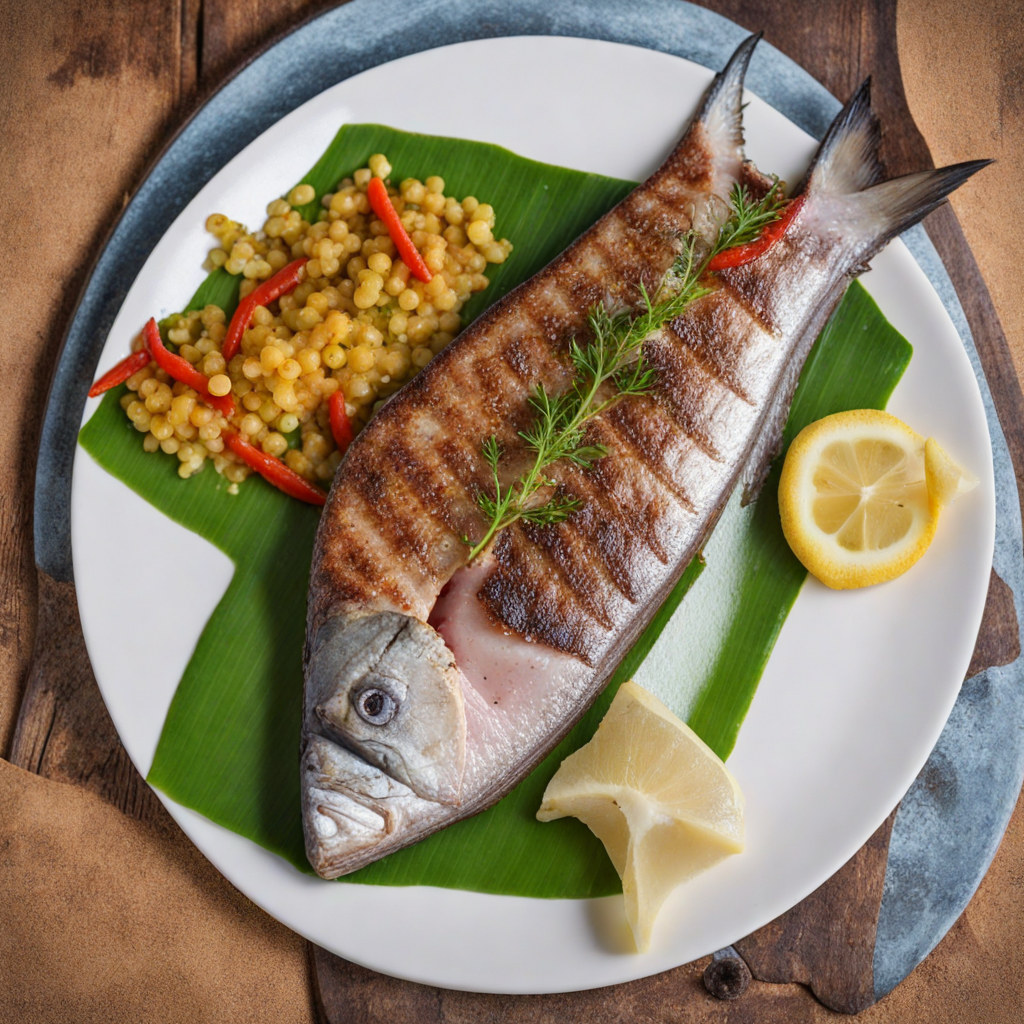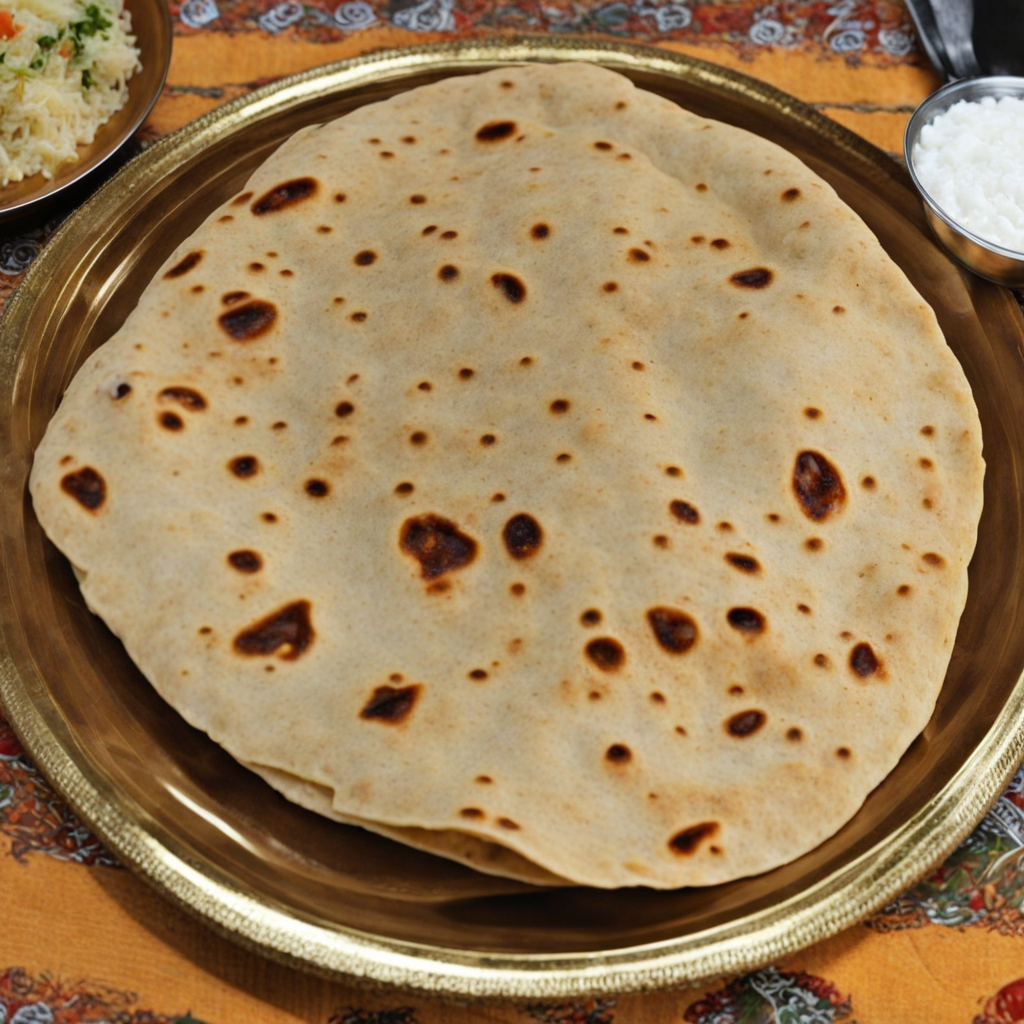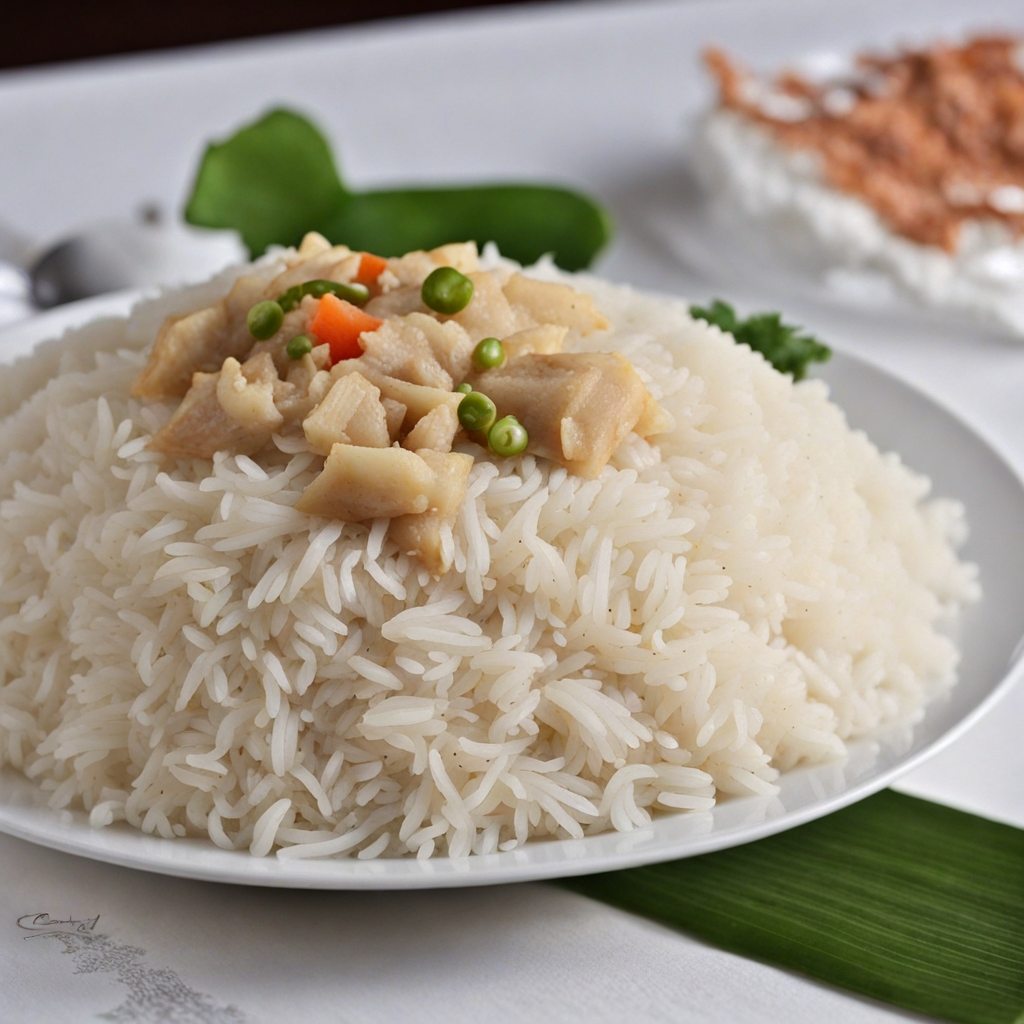Langouste a la Vanille
Langouste à la Vanille is a delightful culinary experience that hails from the idyllic islands of Comoros, where the lush landscapes and rich cultural heritage converge to create unique flavors. This dish features succulent langoustes, known for their sweet, tender meat, which is delicately prepared to highlight its natural essence. The preparation method often involves grilling or sautéing, ensuring that the langouste retains its moisture while developing a beautiful caramelization on the shell, enhancing its visual appeal and flavor profile. What sets Langouste à la Vanille apart is the exquisite infusion of vanilla, a prized ingredient in Comorian cuisine. The use of locally sourced vanilla beans adds a fragrant aroma and a subtle sweetness that complements the briny notes of the seafood. The vanilla is often incorporated into a rich sauce or glaze, creating a harmonious balance that elevates the dish to new heights. This unexpected pairing of vanilla with seafood showcases the island's unique culinary identity, marrying land and sea in a celebration of flavor. When served, Langouste à la Vanille presents a feast for both the eyes and the palate. The vibrant colors of the dish, often accompanied by a medley of seasonal vegetables or fragrant rice, invite you to savor each bite. Diners will appreciate the tender texture of the langouste, enhanced by the aromatic vanilla, leaving a lingering sweetness on the palate. This dish is not just a meal; it's an exploration of Comorian culture, inviting food lovers to embark on a journey of taste that is both exotic and unforgettable.
How It Became This Dish
Langouste à la Vanille: A Culinary Jewel of Comoros Introduction Langouste à la Vanille, a sumptuous dish hailing from the Comoros Islands, presents a tantalizing fusion of flavors, culture, and history. Nestled in the Indian Ocean between Madagascar and the African mainland, the Comoros is an archipelago known for its breathtaking landscapes, rich biodiversity, and vibrant cultural heritage. This dish, featuring succulent spiny lobster paired with the aromatic sweetness of vanilla, embodies the islands' unique culinary identity, shaped by centuries of trade, colonization, and the blending of influences from Africa, the Middle East, and France. Origins and Ingredients The Comoros Islands, comprising Grande Comore, Anjouan, Mohéli, and Mayotte, have a long history of maritime activity. The indigenous peoples, primarily of African and Arab descent, relied on fishing and agriculture. The waters surrounding the islands are teeming with marine life, making seafood a staple in the local diet. Spiny lobster (langouste) is a prized catch, celebrated for its delicate flavor and tender texture. Complementing the langouste is vanilla, a spice that has become synonymous with the Comoros. The islands are among the world's leading producers of vanilla, particularly the variety known as Bourbon vanilla, which is renowned for its rich flavor profile. The cultivation of vanilla in Comoros began in the 19th century, introduced by French colonialists who recognized the islands' suitable climate for growing this delicate orchid. The combination of langouste and vanilla in a single dish is a testament to the islands' abundant natural resources and the creativity of Comorian cuisine. Cultural Significance Langouste à la Vanille is more than just a dish; it represents the culinary heritage of the Comoros. Food in Comorian culture is deeply intertwined with social customs, family gatherings, and celebrations. It plays a vital role in communal life, where meals are often shared among family and friends. The preparation of langouste à la Vanille is typically reserved for special occasions—weddings, religious holidays, and family reunions—reflecting its status as a dish of luxury and celebration. In Comorian culture, the act of sharing food is a gesture of hospitality and love. Cooking langouste à la Vanille is a communal effort, often involving multiple generations of family members. This collaborative spirit not only strengthens family bonds but also ensures the transmission of culinary traditions from one generation to the next. Moreover, the dish is a symbol of the islands' colonial past. French colonization of the Comoros began in the 19th century, and the influence of French cuisine is evident in the sophistication and presentation of dishes like langouste à la Vanille. The use of vanilla, a luxury ingredient, highlights the blend of local and colonial culinary practices that define Comorian gastronomy. Development Over Time As the Comoros entered the 20th century, the political landscape began to shift dramatically. Following independence from France in 1975, the islands faced various challenges, including political instability and economic difficulties. However, the culinary traditions, including the preparation of langouste à la Vanille, persisted. During this period, the dish began to evolve, incorporating modern cooking techniques while staying true to its roots. Chefs began experimenting with presentation and flavor combinations, infusing the traditional recipe with influences from global cuisine. The use of local spices and ingredients became more pronounced, enhancing the dish's flavor profile while maintaining its essence. In the 21st century, the rise of culinary tourism has brought renewed attention to Comorian cuisine, with langouste à la Vanille at the forefront. Visitors seeking authentic dining experiences have embraced the dish, prompting local chefs to refine their recipes and showcase the islands' culinary heritage. Restaurants and resorts began to feature langouste à la Vanille on their menus, elevating it to a must-try dish for tourists. The resurgence of interest in traditional dishes has also led to a revival in vanilla cultivation, as local farmers recognize the economic potential of high-quality vanilla production. This resurgence ensures that the essential ingredient for langouste à la Vanille remains in abundance, allowing for the continued celebration of this exquisite dish. Modern Interpretations Today, langouste à la Vanille continues to evolve, with chefs across the Comoros and beyond putting their own spin on the classic recipe. While the traditional method calls for grilling or sautéing the lobster, contemporary variations may incorporate sous-vide techniques or innovative sauces that further enhance the dish's flavor. The dish has also found its way into the international culinary scene, where chefs showcase Comorian flavors in fusion cuisine. The combination of spiny lobster and vanilla has been adapted in various forms, blending with diverse culinary traditions while maintaining the essence of Comorian heritage. Moreover, the dish serves as an ambassador for the Comoros, introducing the islands' rich culture and unique ingredients to food enthusiasts worldwide. Culinary festivals and events focused on African and Indian Ocean cuisine have highlighted langouste à la Vanille as a dish that encapsulates the spirit of the Comoros. Conclusion Langouste à la Vanille is a culinary masterpiece that reflects the history, culture, and identity of the Comoros Islands. From its origins as a celebration of local ingredients to its modern interpretations in international cuisine, this dish embodies the rich tapestry of influences that define Comorian gastronomy. As the islands continue to navigate their unique place in the world, langouste à la Vanille remains a symbol of resilience, creativity, and the enduring power of food to bring people together. Whether enjoyed on the shores of the Comoros or in a distant restaurant, the dish tells a story of a vibrant culture, inviting all to savor the flavors of this enchanting archipelago.
You may like
Discover local flavors from Comoros







